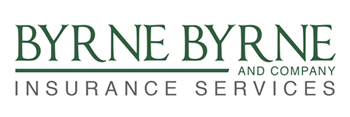Back to School! The ABCs of SBCs
 It’s that time of year for many employers: fall open enrollment! That means many administrators of group health plans (those up for renewal at this time of year) are working to provide Summary of Benefits and Coverage (SBC) to their eligible individuals. (Technically, for insured plans the insurer is responsible for providing an SBC to the employer within seven days after the employer completes an application. The insurer and the plan administrator are each responsible for providing the SBC to participants, but only one of them needs to actually do it – they need to work out who will do the distribution. For self-funded plans, the plan administrator is responsible for providing the SBC. The plan administrator can hire others, like its TPA, to help, but the plan administrator is ultimately responsible.) Assuming you have determined who is responsible, it is a good time to review all the latest requirements (including those independent of renewal dates) to be sure you fulfill this obligation correctly and avoid penalties. SBCs must be provided:
It’s that time of year for many employers: fall open enrollment! That means many administrators of group health plans (those up for renewal at this time of year) are working to provide Summary of Benefits and Coverage (SBC) to their eligible individuals. (Technically, for insured plans the insurer is responsible for providing an SBC to the employer within seven days after the employer completes an application. The insurer and the plan administrator are each responsible for providing the SBC to participants, but only one of them needs to actually do it – they need to work out who will do the distribution. For self-funded plans, the plan administrator is responsible for providing the SBC. The plan administrator can hire others, like its TPA, to help, but the plan administrator is ultimately responsible.) Assuming you have determined who is responsible, it is a good time to review all the latest requirements (including those independent of renewal dates) to be sure you fulfill this obligation correctly and avoid penalties. SBCs must be provided:
- At open enrollment
- At renewal if there is no open enrollment
- At initial enrollment
- At special enrollment
- With a material mid-year change
While the obligation to issue an SBC applies to all employers, regardless of size or type (private, government, not-for-profit)—including grandfathered plans—it primarily covers medical (PPO, HDHP, HMO, etc.) coverage and is not needed for the following:
- Stand-alone dental and vision benefits (stand-alone means these benefits are elected separately from medical and have discrete premiums)
- Health FSAs unless the employer makes a significant contribution
- Health savings accounts (HSAs), although the high-deductible health plan will need an SBC; the HSA can be mentioned as a source of funds to meet deductibles, coinsurance, etc. if desired
- Hospital indemnity or specified illness coverage
- Long-term care, disability or accident coverage
- Retiree-only plans
Remember that you must use the standard format prescribed by the regulatory agencies for the SBC. UBA offers a highlights document with a great summary of what and what not to include, alternate language requirements, electronic delivery guidelines and more. Make sure you:
- Verify who will prepare the SBC (insurer, TPA, employee(s), advisor) – and make sure that this person knows what is expected of them. (See the UBA SBC Frequently Asked Questions document for detailed information on instructions and templates.)
- Verify the manner of distribution (paper or electronic) for different types of participants
- Work through coordinating information if some benefits are provided by other vendors (such as prescription drugs or managed behavioral care)
- Determine whether a non-English version of the SBC will be needed (see the UBA highlights document for a link to the list of the impacted counties)
- Ensure that newly-eligible employees receive the SBC or notification of SBC availability with their application materials
- If SBCs are provided electronically, implement a process to provide paper SBCs within seven days after they are requested
If you aren’t sure how to handle vision benefits, HRAs, EAP, wellness programs, HSAs, FSAs, carve-outs, information on premiums/contributions or how to complete the coverage examples or reconcile your plan terms with the glossary, view the UBA SBC Frequently Asked Questions document for detailed information.
So why does this process seem so inflexible? The purpose of the SBC is to make it easier for employees to compare coverage options. The regulatory agencies believe that consistent presentation will make it easier for employees to do side-by-side comparisons. We hope these latest UBA tools (SBC highlights and SBC Frequently Asked Questions) help make this process more bearable!


 By Mick Constantinou, Advisor, Employee Benefits
By Mick Constantinou, Advisor, Employee Benefits
 With many employers forced to move employees to part-time schedules, send employees to exchanges, drop spouse/family coverage—or coverage altogether, and/or
With many employers forced to move employees to part-time schedules, send employees to exchanges, drop spouse/family coverage—or coverage altogether, and/or 
.jpg) I am constantly amazed when I hear that large employers (those with 100-plus employees, and especially those with 1,000-plus) do not know how they are going to handle
I am constantly amazed when I hear that large employers (those with 100-plus employees, and especially those with 1,000-plus) do not know how they are going to handle 
 “The single biggest problem in communication is the illusion that it has taken place”. – George
“The single biggest problem in communication is the illusion that it has taken place”. – George
 By Mick Constantinou, Advisor, Employee Benefits
By Mick Constantinou, Advisor, Employee Benefits
 A recent article in Human Resource Executive Online shared a startling statistic:
A recent article in Human Resource Executive Online shared a startling statistic: 

 With all of the
With all of the 